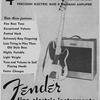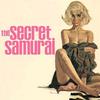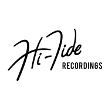jp

Joined: Feb 09, 2007
Posts: 917
Brew City


|

Posted on Nov 07 2007 02:09 PM
I am changing jobs and will have about 2 weeks off of work. I'm planning to use this time to do some much needed woodshedding. I've played bass for about 20 years and I never used a pick. When I started playing guitar a few years ago I was only bashing on acoustic playing rockabilly and hillbilly boogie, I never developed too much finesse.
About 3 years ago I started playing electric guitar seriously and picking is still really one of my weak spots. I'm primarily playing rhtyhm in my both of my band, but do (attempt) to play lead on a few tunes and I have a few solo spots. Normally I have somewhat limited practice time when I do practice I usually spend time learning tunes, practicing my band tunes or writing. I've got a couple of instructional DVDs and a few instruction books, but nothing that is really helpfull with technique.
Does anyone have any favorite picking exercises or any suggestions for exercises to develop picking technique? Any books, DVDs or websites out there that you might recommend.
My goal is to develop speed and accuracy with my picking in the surf/instro context.
— The Exotics 1994-Current
The Chickenshack - www.wmse.org
www.thedoghouseflowers.com
www.uptownsavages.com
|
DannySnyder

Joined: Mar 02, 2006
Posts: 11076
Berkeley, CA











|

Posted on Nov 07 2007 02:26 PM
This is a very common exercise and will have great impact on your picking skills. Firstly, use a metronome so you can keep track of your progress. Picking slow with accuracy can be more challenging than picking quickly. Your goal is clarity, not speed.
Starting with the low E string and working up vertically (A string, D string,etc...) finger the first 4 frets (F,F#,G,G#) using fingers 1,2,3,4 . Immediately jump up to the next string without losing a beat. When you reach the 6th string shift over 1 fret and go back down again, this time using fingers 4,3,2,1 without losing a beat. Work your way up and down the neck this way, slowly increasing the tempo with each pass. I still use this to warm up before playing, it helped me a great deal when I took up the guitar again a couple years ago.
Good luck.
— Danny Snyder
"With great reverb comes great responsibility" - Uncle Leo
I am now playing trumpet with Prince Buster tribute band 'Balzac'
Playing keys and guitar with Combo Tezeta
Formerly a guitarist in The TomorrowMen and Meshugga Beach Party
Latest surf project - Now That's What I Call SURF
|
jp

Joined: Feb 09, 2007
Posts: 917
Brew City


|

Posted on Nov 07 2007 05:15 PM
Sounds like a good place to start. Thanks. Any other suggestions out there?
— The Exotics 1994-Current
The Chickenshack - www.wmse.org
www.thedoghouseflowers.com
www.uptownsavages.com
|
B_Zilla

Joined: Oct 13, 2007
Posts: 90
Rochester, NY
|

Posted on Nov 07 2007 07:21 PM
http://www.ultimate-guitar.com/lessons/guitar_techniques/all_the_aspects_of_picking_part1.html
I like that lesson a lot. It may seem a bit hard a first, but practice like that helps quite a bit.
If you're looking for more, try the lessons section on that site. They usually have helpful guides on any subject you're looking for.
— "Hope is a waking dream." - Aristotle
|
Joelman

Joined: Sep 07, 2006
Posts: 1506
Redlands, CA




|

Posted on Nov 07 2007 11:32 PM
I would like to add my 2cents to what DannySnyder said.
I do the very same exercise, and I think it is a good one, but I do it with my eyes closed. This forces me to hear as well a sence where my fingers are at on the fretboard. I also close my eyes to practice a song. If I make a mistake, I open my eyes, see where I am, and then I close my eyes again and proceed from there. This gives me a feel for the sounds, and a muscle memory thingy too!
Joel
|
Spud

Joined: Jul 23, 2007
Posts: 666
Oz

|

Posted on Nov 09 2007 08:12 PM
I'll flip in another 2 cents and add to what has been said by this -
Make sure that your pick is going down on one note and back up on the next and keep it slow until every note is clear and in time, build the speed on the passes very slowly.
|
Ruhar

Joined: Jun 21, 2007
Posts: 3909
San Diego, CA





|

Posted on Nov 09 2007 10:16 PM
I've never really done any exercises or anything like that, but after reading Danny's post, I tried his exercise. I must say I do think its really helpful. It really forces all four fingers to respond in tempo to the picking being done. Thanks Danny!
— Ryan
The Secret Samurai Website
The Secret Samurai on Facebook
|
DannySnyder

Joined: Mar 02, 2006
Posts: 11076
Berkeley, CA











|

Posted on Nov 10 2007 09:20 AM
Spud
I'll flip in another 2 cents and add to what has been said by this -
Make sure that your pick is going down on one note and back up on the next and keep it slow until every note is clear and in time, build the speed on the passes very slowly.
Thanks Spud, that's exactly right. I forgot that detail. You're welcome Ruhar. After you get bored with that one here's an alternative.
Start the same way - first finger on first fret on first string, then 2nd finger on 2nd fret on 2nd string, then 3rd finger on 3rd fret on first string and finally 4th finger on 4th fret on 2nd string. When you hit the 6th string you start to go down again, at that point move over one fret. Continue on from there same as the other exercise - up and down the neck.
Have fun. 
— Danny Snyder
"With great reverb comes great responsibility" - Uncle Leo
I am now playing trumpet with Prince Buster tribute band 'Balzac'
Playing keys and guitar with Combo Tezeta
Formerly a guitarist in The TomorrowMen and Meshugga Beach Party
Latest surf project - Now That's What I Call SURF
|
websurfer

Joined: May 14, 2007
Posts: 1753



|

Posted on Nov 21 2011 04:19 PM
Since reviving old threads has become all the rage lately, I just thought I would add something here. I recently ordered the Art of Picking by Jimmy Bruno:
http://www.amazon.com/Mel-Bay-Picking-Jimmy-Bruno/dp/0786672196
I ended up returning it, because I bought it used, and it was missing the dvd. Anyway the gist of the idea is this:
-
Down stroke only when moving to higher strings.
-
Upstroke only when moving to lower strings.
-
Alternate up and down strokes when playing consecutive notes on the same string.
These rules have an exception. When there is a pause or rest time between phrases, and a down (or up) stroke would normally come next, either up or down can be chosen to start the next phrase.
Some call this sweep picking, and it actually is, though the author dislikes that term. He mainly devised his system as a Jazz player to better facilitate translating Charlie Parker style horn lines to the guitar. He found this way to be the most economical, and fastest with the least wasted motion.
This may be too much for the surf guitarist. He explains that habits from straight alternate picking will have to be broken, but can be done with practice.
Right now, I find it awkward to "up pick" say, a four note arpeggio on consecutive strings starting on the first (hi E)--even if I down pick to start it off (which is allowed).
Alternating those seems more natural and fluid.
Anyway, just thought I would share this brief review in case anyone was interested in what this book was about.
Last edited: Nov 21, 2011 16:35:23
|
DannySnyder

Joined: Mar 02, 2006
Posts: 11076
Berkeley, CA











|

Posted on Nov 21 2011 06:54 PM
Good tips, thanks for sharing Websurfer.
— Danny Snyder
"With great reverb comes great responsibility" - Uncle Leo
I am now playing trumpet with Prince Buster tribute band 'Balzac'
Playing keys and guitar with Combo Tezeta
Formerly a guitarist in The TomorrowMen and Meshugga Beach Party
Latest surf project - Now That's What I Call SURF
|
pavlovsdog

Joined: Nov 22, 2010
Posts: 297

|

Posted on Dec 02 2011 11:41 AM
I have a small pet peeve with those 4 finger exercises and endless variations. They are great for building strength but can really limit your ear, especially when you do them so much that a series of 4 random notes in a row sound normal.
If you want to do those types of exercises then do the proper chromatic scale which at least has some musical context.
6th string - E,F,F#,G,G# (0,1,2,3,4)
5th string - A,A#,B,C,C# (0,1,2,3,4)
4th string - D,D#,E,F,F# (0,1,2,3,4)
3rd string - G,G#,A,A# (0,1,2,3)do not play B 4th fret, two Bs in a row will throw the sound of the scale off and sound weird.
2nd string - B,C,C#,D,D# (0,1,2,3,4)
1st string - E,F,F#,G,G#,A,A#,B,C,C#,D,D#,E (0,1,2,3,4,5,6,7,8,9,10,11,12)
do not lift any of your fingers, keep everything planted, it will really help your finger control and train you to keep your fingers planted and not flying everywhere.
picking - quarter notes (single down stroke for each note)
eight notes (down up on each note)
sixteenth notes (d/u/d/u each note)
and then do all variations on sixteenth note and triplet rhythms for example sixteenth note variations: d d/u, d/u d, etc.
just play the scale once for each rhythm, and then move on to other things. But do it every time you practice.
Doing an endless series of random note picking exercises, to me, is the equivalent of wearing a hair shirt.
|


































